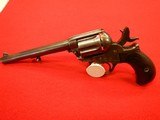 |
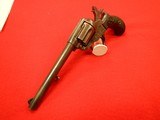 |
 |
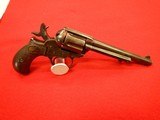 |
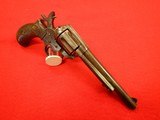 |
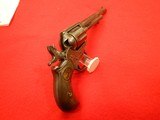 |
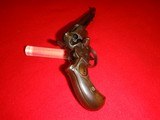 |
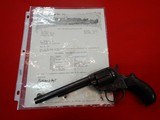 |
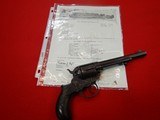 |
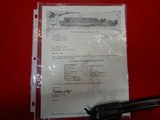 |

COLT DOUBLE ACTION REVOLVER MODEL OF 1877 .41/c
Guns International #: 102250910 Seller's Inventory #:
Category: Colt Revolvers - Antique - Colt Revolvers - Double Action Pre-War
Seller's Information
When emailing or calling sellers direct, please mention that you saw their listing on GunsInternational.com
Seller: The Bullet Hole
Member Since: 7/17/19
State: Kansas
Zip: 66202
Country: United States
Phone: (913) 432-0050
Seller: FFL Dealer
Return Policy: 3 day inspection and return policy on used guns.
Payment Types Accepted: Credit Card or Cashier's Check
Description:
WE JUST RECEIVED A REALLY NICE COLT DOUBLE ACTION REVOLVER MODEL OF 1877 IN .41/c CALIBER, INFO IS AS FOLLOWS;
In 1877 Colt introduced their first entry into the double action revolver market. While they had a commanding lead over their competition when it came to single action handguns with their “Model P”, better known as the US Model 1873 Single Action Army, they had fallen behind some of the competition in their failure to manufacture a double action revolver. Remington had been in the double action cartridge revolver market for over a decade by 1877 and had manufactured double action percussion revolvers prior to that. Smith & Wesson, which was Colt’s major competition in the handgun market at that time had yet to introduce a double action handgun and would not do so until 1880. No doubt the powers that be at Colt also considered that the popularity of the double action mechanism in Great Britain might help Colt develop additional inroads in that market.
The Model 1877 was not the modern double action, swing out cylinder handgun that comes to mind when one thinks of double action revolvers today. Instead, the 1877 was essentially a scaled down Single Action Army with a fixed six-shot fluted cylinder retained by a conventional arbor pin that was still loaded and unloaded through a gate in the right side of the frame, and which introduced a compact and somewhat elegant “bird’s head” grip that was both comfortable and made the guns easier to conceal in a pocket. The primary differences from the larger Single Action Army were the double action mechanism, the placement of the locking notches for the cylinder on the rear face of the cylinder like the New Line series of handguns and the lower power cartridges the guns were chambered for. The initial production calibers for the revolvers were .38 Colt and .41 Colt, with both cartridges available in a “long” and “short” variant, and with .32 Colt added to the product line in 1888. This last caliber was dropped circa 1900, with only about 200 of the .32 caliber guns being produced during that time frame. The guns are known today by their nicknames which were introduced by one of Colt’s largest distributors, Benjamin Kittredge of Cincinnati, OH. In period advertising, Kittredge referred to the .38 caliber variant as the “Lightning” and the .41 caliber version as the “Thunderer”. The .32 caliber version received the moniker “Rainmaker”. Like most Colt handguns of the period there were two standard finishes, blued barrels and cylinders with color casehardened frames and full nickel finish. In both cases the screws and small parts were typically fire blued and the hammers were polished bright on the sides with the top and spur fire blued as well. Early production guns had checkered two-piece rosewood grips, but by about 1880 checkered hard rubber grips were standard. Like any Colt handgun of the period, special order finishes and grips were available at extra cost, with ivory and mother of pearl being the most popular grip upgrades and finish upgrades being limited only by the buyer’s imagination and budget. Engraving as well as grip carvings were also available upgrades. Like the numerous finish options, a number of barrel lengths were available as well. The standard lengths ran from 1 ½” to as long as 10”, typically in ½” or sometimes 1” increments. Guns with barrels shorter than 4 ½” were produced without an ejector mechanism, although some of the guns with longer barrels were special ordered without ejectors as well. Some of the rarest barrel lengths are 1 ½”, 2” and 6” without the ejector rod and any barrel length of 7” or longer. The guns were typically marked with a two-line barrel address regardless of their length and the left side of the frame was marked with a three-date in three-line patent mark and a Rampant Colt in a circle logo. Caliber markings were applied to the left side of the barrels of most guns from about 1880 onward. For the first few years these markings were acid etched, but by the latter part of the 1880s the markings were being applied with a roll die. Those guns not marked on the barrel were normally marked with the caliber on the left side triggerguard web. The guns were very successful for Colt, and during their 33-year production run from 1877 to 1909 some 166,849 were manufactured. The Model 1877 also provided the springboard for the launch of the larger framed Model 1878 “Frontier” the following year, but the 1878 was not nearly as successful with only about 51,000 being produced during its production run, despite being offered in some of the most popular handgun calibers of the period like .44-40, .38-40 and .45 Colt. Some of the luminaries known to have owned or carried Colt 1877 revolvers include the infamous “Billy the Kid” who was supposedly carrying a Lightning the night he was killed by Pat Garrett, John Wesley Harding who was known to prefer a Thunderer and the artist Frederic Remington who also owned a Thunderer that he purchased in March of 1895.
**BUYER PAYS SHIPPING AND INSURANCE**
SOLD
Handgun Caliber: .41 Long Colt (.41 Colt, .41 LC)
Manufacturer: COLT
Model: 1877
Serial Number: 53150
Barrel Length: 6
Condition: VERY GOOD
Metal Condition: VERY GOOD
Wood Condition: VERY GOOD
Bore Condition: VERY GOOD